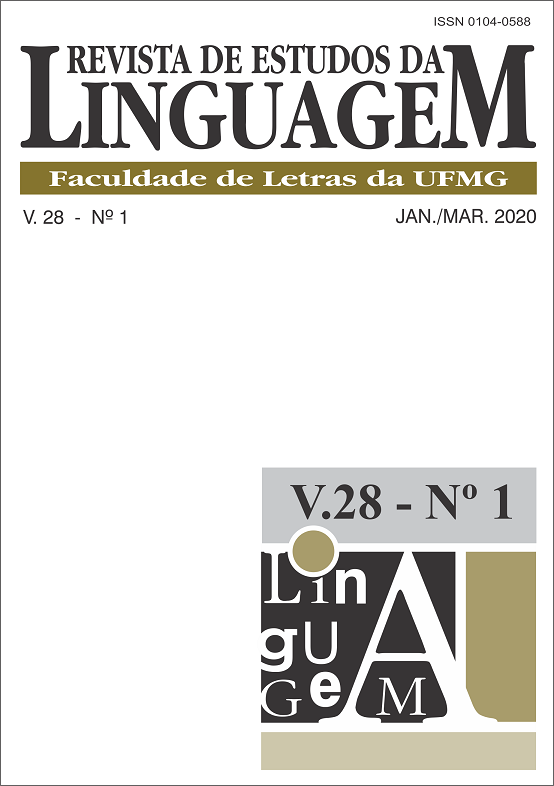O papel dos contextos e da polissemia na constituição histórica de novos juntores contrastivos / The role of contexts and polysemy in the historical development of new contrastive connectives
DOI:
https://doi.org/10.17851/2237-2083.28.1.159-203Palavras-chave:
Contextos, polissemia, junção contrastiva, gramaticalizaçãoResumo
Resumo: Este trabalho tem por objetivo investigar, em perspectiva longitudinal, o processo de constituição de construções de contraste com agora (português) e de construções de contraste com now (inglês) que expressam oposição semântica. À luz dos percursos de mudança atravessados por essas construções e de um quadro teórico que atribui à pragmática o papel de força motriz da mudança (TRAUGOTT; DASHER, 2002), busca-se reunir evidências do papel dos contextos e da polissemia no desenvolvimento de novos juntores contrastivos. Para tanto, desenvolve-se um estudo diacrônico dos contextos que fornecem condições para as mudanças de agora e de now, que atuam originalmente como advérbios temporais. Os resultados mostram, em conformidade com Traugott (2012), que, se o desenvolvimento de novos juntores envolve gramaticalização, e não apenas mudança de significado, têm papel chave contextos que aliam motivações para reinterpretação semântico-pragmática a motivações para reanálise categorial. Além disso, a análise diacrônica permite reconhecer um amplo conjunto de similaridades entre a trajetória de agora e a trajetória de now, apontando para a produtividade translinguística da fonte temporal como canal de derivação para significados contrastivos.
Palavras-chave: contextos; polissemia; contraste; gramaticalização.
Abstract: This paper aims to investigate, in a longitudinal perspective, the historical development of contrastive constructions with agora (Portuguese) and of contrastive constructions with now (English) that express semantic opposition. In the light of the paths of change undergone by these constructions and of a theoretical framework that assigns to pragmatics the role of the chief driving force in change (TRAUGOTT; DASHER, 2002), the paper searches for evidence of the role of contexts and of polysemy in the development of new contrastive connectives. For this purpose, the research develops a diachronic study of contexts that provide conditions to the changes undergone by agora and by now, which are originally temporal adverbs. The results show, in accordance with Traugott (2012), that, if the development of new connectives involves grammaticalization, and not only meaning change, contexts that ally motivations for semantic-pragmatic reinterpretation and motivations for categorial reanalysis play a key role. Moreover, the diachronic analysis shows a great amount of similarities between the path of change undergone by agora and the path undergone by now, pointing to the productivity, across languages, of the temporal source as a derivation channel for contrastive meanings.
Keywords: contexts; polysemy; contrast; grammaticalization.





